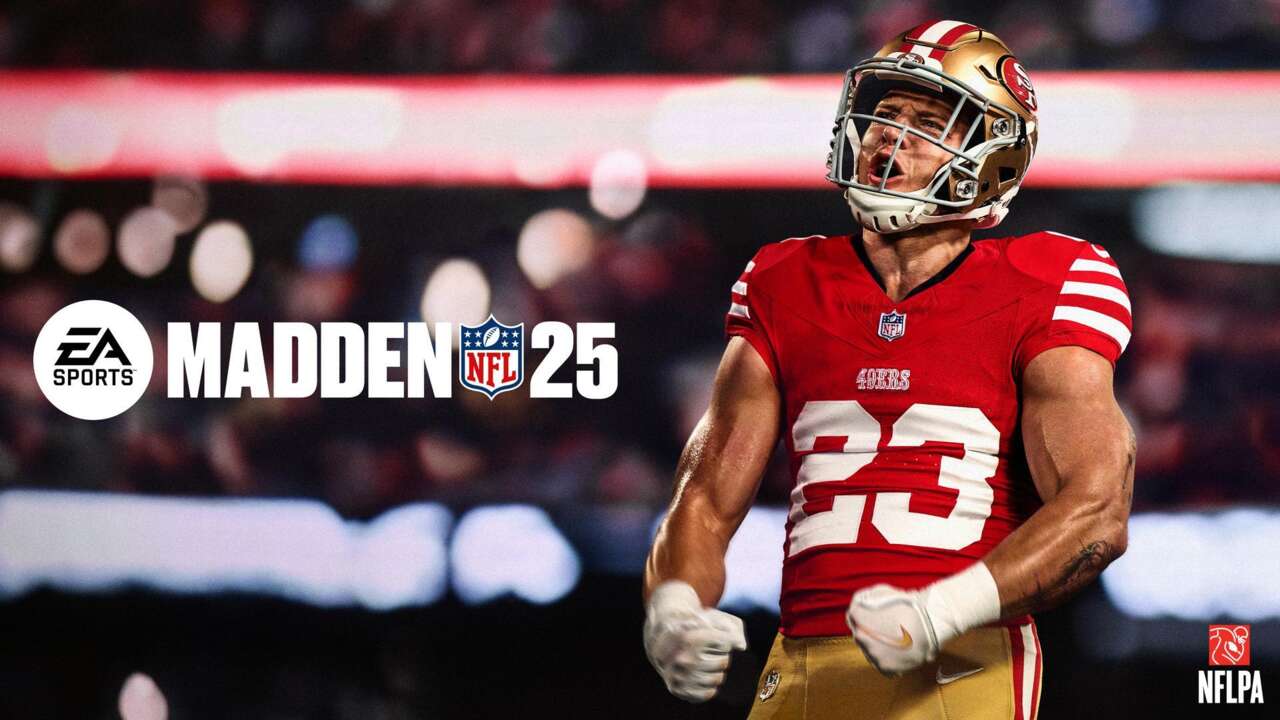I’ve been reviewing Madden’s annual installments nearly as long as I’ve been writing online, and I’ve been playing the series since the mid-’90s as a little boy. It taught me not just how to play football, but also how to play video games. It has been in my life for as long as I can remember and tied to my career as closely as any game. But lately I’ve wondered if it may be time for me to take a year off. Madden NFL 25 is–for the third consecutive year, by my count–noticeably improved whenever you’re on the field playing football. In this regard, last year’s game was the best I’d seen in the series’ history, and this year’s game outdoes that. If you’re going to excel at one thing, it’s good to have that be the on-field gameplay. However, describing the game’s problems off the field is proving to be a difficult task due to so many of them being repeat offenders year after year.
It was a few years ago when EA started using the term Fieldsense to describe Madden’s multi-year overhaul of on-field mechanics, and though the term is primarily a nice shorthand for the marketing folks to play off of, it coincided with an obvious intent to fix the game on the virtual gridiron itself. Madden 23 was the first game in the Fieldsense era, and here in its third year, the investment in football fundamentals continues to pay off with Madden 25.
This starts with the game’s marquee new feature, Boom Tech. Like the umbrella term of Fieldsense, Boom Tech is the back-of-the-box marketing jargon for what is nevertheless a great new feature. With Boom Tech, the game’s collision system has been overhauled considerably. In past years, the Madden team has touted how things like weight and height would matter more, but never before has it really felt so different. This year, the difference is evident and welcome.
Essentially, Boom Tech breaks the game’s collision and tackling animations into several smaller animations. This isn’t ragdoll physics; instead, it’s an animation-branching system with complex math going on under the proverbial hood of the game at all times, and the result is more unpredictable outcomes, all game, every game. You’ll still sometimes see animations you recognize from past years, but they are rarer and, when present anyway, made more nuanced. I’ve seen a wide variety of outcomes in Madden 25 that a football game ought to have, like better-contested catch animations on deep passes and more bruising, Beastquake-like runs that were previously missing from the series.
That’s all because of Boom Tech. This new system considers weight, momentum, player ratings, and pursuit angles more effectively when a defender runs into the ball carrier. This doesn’t guarantee the bigger, faster player wins a tackle attempt, thankfully, as even the best defenders in the game can be caught out of position, for which they are now more realistically penalized.
This can even mean the ever-reliable Hit Stick is now less of a crutch for an open-field tackler. If you use the Hit Stick too soon, too late, or from a bad angle, you’re not going to get one of those fumble-forcing blow-ups like before, and the game’s way of now providing on-field feedback for all Hit Stick attempts can tell you exactly why an attempt did or didn’t land as intended.
This sounds like a defense-heavy new toy, but it actually helps both sides of the ball. The player with the leg up on his opponent will win this tug-of-war play after play. It feels great and usually looks great, too. But most importantly, it’s realistic. To add an extra detail to this new system, running backs now “get skinny” when running through the trenches, too, as they attempt to hit the hole. This makes them a harder target to crash into, which plays directly into that perpetually number-crunching system that is Boom Tech.
The on-field improvements go beyond that. I love how you can better disguise a defense now by presenting a pre-snap look that differs from the coverage you’re actually running. Past Madden games had a simplistic version of this, where you could disguise zone coverage as man coverage or vice versa, but this has expanded to include all types of coverage shells, like Cover 3, 4, 6, et al. For the players who are more invested in Xs and Os, this is incredibly gratifying.
On offense, you can now adjust the depth of your receivers’ routes, too, which similarly expands on a previously simplified mechanic. Madden has long let you audible a route to “the sticks,” meaning you’d make your cut at the first down marker, ensuring you pick up the first down should you complete the catch. But now you can essentially draw the route from the line as the QB using the pre-snap menus. For example, this allows a would-be five-yard in-cutting route to instead be run to various other depths, thereby letting you exploit the holes in a defense more easily.
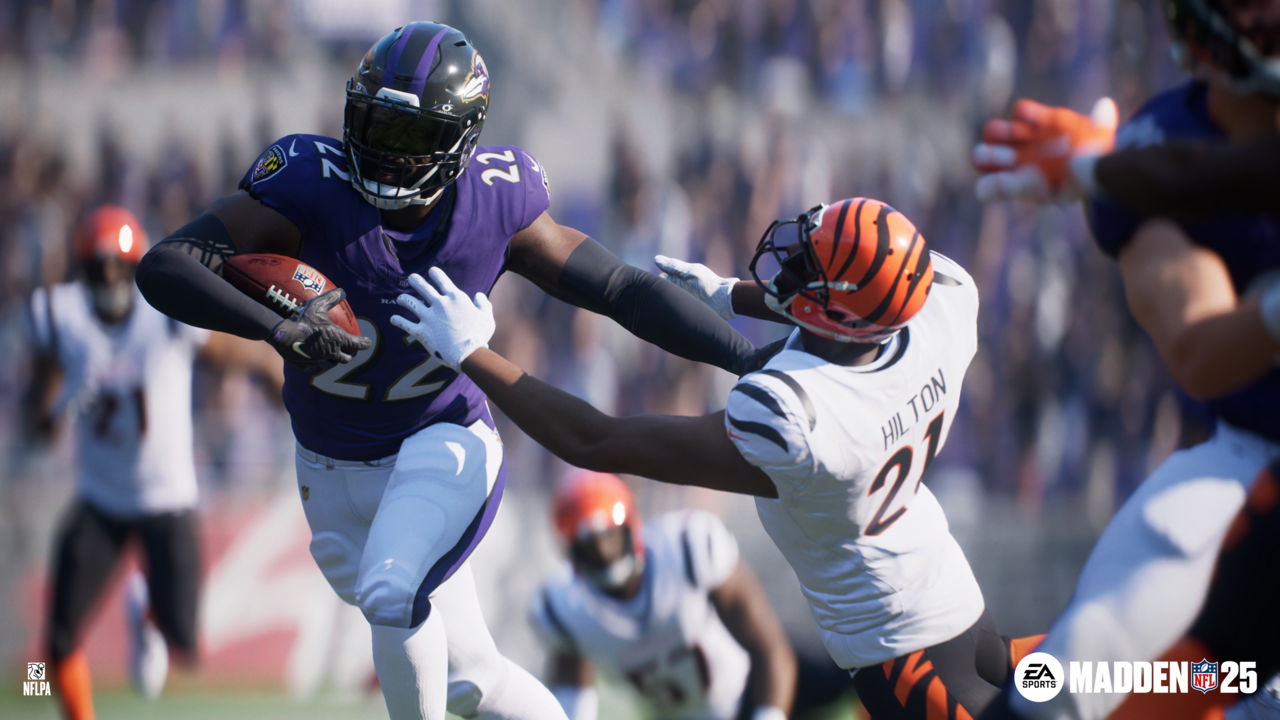
This provides a great counter for the players grinding out a chess match with a well-disguised defensive guru on the other end. If you can read the defense and see through their disguise, it feels like dodging a jab and landing a haymaker. Even offensive-line adjustments have been given more options, such as shifting half of the line in addition to the previously available whole-line shifts.
These new features share a common trait: nuance. They each expand on systems that have been in the game for years but are now more satisfyingly designed to reward smart football play-calling and excellent execution. It’s why, on the field, this is the best Madden has ever been. Following College Football 25, some have complained that Madden feels sluggish. I find the opposite to be true. Madden 25 feels lifelike, whereas College Football 25 is more arcadey, with players that soar around the field as if games are played at 1.5x speed. I find both are enjoyable, but I want my football to be realistic, and Madden 25 is the most realistic entry in the series, all thanks to the team’s hyperfocus on nuanced football.
But the attention to detail ends as soon as you step out of bounds. My main concern with the game over the last two years is that, as the on-field product got more enjoyable, most of what has surrounded it has felt stuck in neutral, sometimes seeing such minor improvements that they actually felt worse in a sense, as though the team is often catching up to offer features it should’ve had beforehand anyway.
This is true once again, and most clearly expressed in Madden 25’s suite of game modes. Its offerings are the same as last year’s, with most modes getting some attention, but none get enough to compel me to play them beyond Franchise, which I only find enjoyable long-term due to competitive league play.
Annually, the most obvious target for criticism is Madden Ultimate Team (MUT). This genre-redefining pay-to-win mode combines card-collecting with fantasy sports and once more expertly rolls out a heap of Skinner Boxes for players to obsess over for a few dollars at a time. Can you play MUT without spending a dime? Certainly, though I don’t know who is having fun that way given the grueling grind through tedious, sometimes borderline inane challenges, such as completing a pass–a single pass–to earn a few coins in a marketplace where anything of value likely costs several thousand or even hundreds of thousands. Still, I expect that most players who jump into MUT don’t spend money, as this is frequently said about seemingly any game offering microtransactions.
But it’s likely anyone playing MUT for a considerable amount of time is spending money, and that’s the idea; if I went to Target every day to simply browse the store without the intention to purchase anything, I would eventually spend money anyway. The same economic principles are clearly displayed in MUT and always have been. Even if you don’t play the mode at all, you’re greeted with a splash screen advertising a new carrot-on-a-stick to chase almost every single day when you boot up the game.
As I wrote last year, the backlash to pay-to-win systems that other games, such as Star Wars Battlefront 2, had to abandon years ago never really spread to the sports-gaming world. So anything Madden Ultimate Team does that feels good in Madden 25, like its streamlined menus that make sense of the deluge of ongoing events, still lingers inescapably beneath this dark cloud of predatory practices.
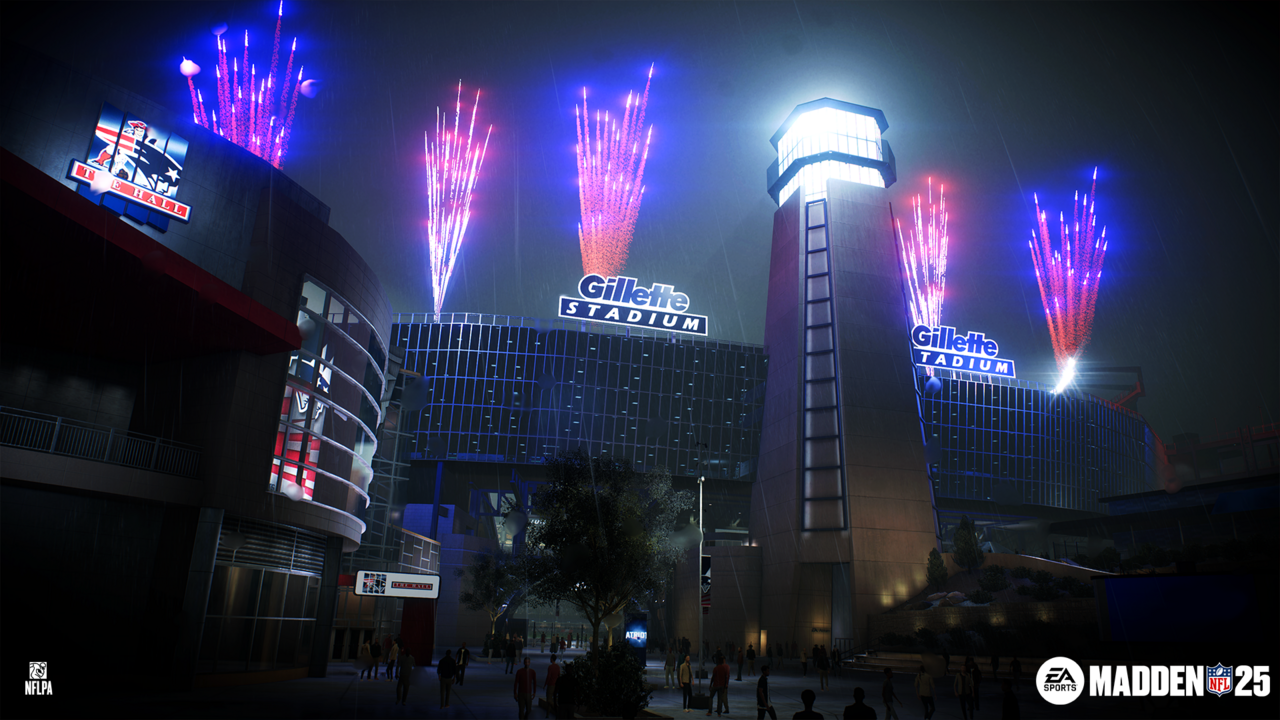
This year, the tutorial I praised a few years ago is made optional, which is a nice touch for the players who spend most of their time in MUT and don’t need the refresher, and those same high-end (and high-spend) players can engage in more seasons of content than before, with eight in total this year. Those are nice touches for players already neck-deep in the mode, but it doesn’t do anything to entice new players or detractors.
The most significant change to MUT in Madden 25 is the new ranked head-to-head (H2H) mode, which takes both your success level and your preferred playstyle into account when assigning you a place on the rankings ladder and matching you with opponents. But my years-old issue with this mode as a whole is seen here on full display once more; the game doesn’t (adequately, if at all) differentiate between players spending a lot, a little, or nothing at all, which quickly creates an ecosystem where the free players can either drown or pay to stay afloat. That’s always felt deliberate, so each year it returns becomes like a gag reflex for where I spend my time within Madden. It’s become my annual tradition to drop the mode entirely after playing it for review.
I admit, there’s a comfort in checking the boxes next to each of the game’s challenges on what feels like an endless list of things to do, and to see my coin and training points totals increase a little at a time can be as stimulating as payday. The mode is psychologically soothing, by design, but in such an overt way that ultimately turns me away from it.
That design idea of giving players a bunch of boxes to check is seen in the game’s other major modes too, including Superstar, its single-player-centric mode that tells the story of one’s created athlete, as well as Superstar Showdown, the ultra-flashy mode that throws out traditional football in favor of neon-lit 3v3 streetball.
Each of these modes was given a lot more rewards to earn, with many lengthy questlines coloring in Superstar mode and new seasonal leaderboards in Superstar Showdown, but these feel like things the modes should’ve had last year, when the studio re-launched Superstar and tied it very closely to its flashier sibling mode. I do enjoy how these modes use the same character, as it means you can upgrade your character for the multiplayer-centric mode by first carving out their NFL career beginning with their rookie season, but this also has the downside of making the lackluster Superstar mode feel vital to progression, and since it’s not interesting, it can be a grind in itself.
Though the presentation marginally improves–you’re no longer sitting in a lonesome hotel room between games; instead, you’re standing around in the locker room–it hasn’t done much else to keep players invested like Franchise or even MUT does. On the bright side, EA has resisted letting you buy your way to a higher rating for your Superstar, which is a design decision that annually hurts some other sports games. Still, you can buy XP boosters, including one of the four types that’s only purchasable with real money, so it’s not a totally clean system either.
Previously, I’ve not enjoyed Superstar Showdown much, but given some of the game’s limited-time modes and events at launch, I found myself slightly more interested in playing it in Madden 25. The first-to-21 rules of the game’s default mode have always felt broken since defenses in this mode are so unreliable and trick plays are so easy to execute; it can feel like playing with randomly assigned teammates is a lost cause, as you’re likely to be grouped with players who can’t pull their weight in a mode where scoring happens roughly every two or three plays.
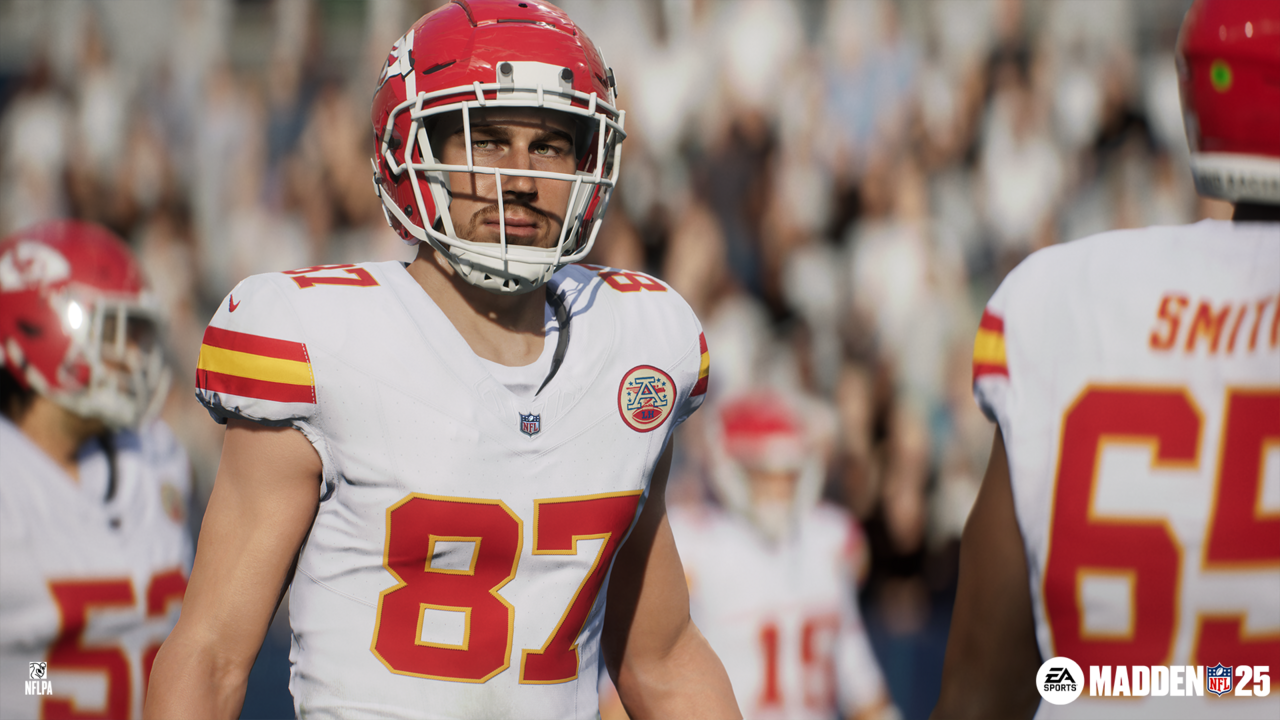
I see the appeal of offering quick in-and-out games for players seeking an alternative to MUT’s short-form challenges, but Superstar Showdown only feels engaging with a reliable team of two buddies running the competitive scene with you, severely limiting its reach. In an ideal world, this mode could be expanded further to become a bigger, more engaging landing spot for players. Though its real-money spending options are also numerous, they’re all cosmetic-only, so I really don’t take issue with them, even as most outfits are so gaudy that I find them embarrassing.
I think this mode has a future, as it does lean into what players want, with plenty of customization and player-spotlight moments, like an emotes list that gives it a Fortnite-like feel. Today, though, it’s not there yet, and the major change in Madden 25 is that it adds more stuff to unlock, which feels cynical. I’ll take more rewards, but the mode’s gameplay should be inherently fun. Neither Superstar Showdown nor Superstar is fun on its own. Not being able to carry emotes and clothing options forward across Madden years is also a pain point, as many games outside of sports have adopted user-friendly cross-game compatibility like this. This is another area in which sports games get away with offering a worse experience.
I actually find Superstar KO, a mode that debuted with Madden 20, to be more enjoyable than Showdown, but it received no attention this year. In terms of quick experiences, it’s the best of them, though it’s a low bar. Effectively a Madden roguelite, you start with a team of a few stars and a limited playbook, and you can earn new elite players with each victory on your way to a perfect 4-0 run in online PvP against players with the same restrictions but different team philosophies. When you lose, you start over with a new team and try again. It feels as though it’s present in Madden 25 because it’s a low-lift task to include it. Otherwise, it would maybe disappear. I fear that’s because the mode has no monetization path, and so it’s doomed to get few resources and live in the shadow of MUT and Showdown.
Maybe I’ve come to expect little of these other modes, but my annual Madden wishlist consists of really just three things: better on-field gameplay, more immersive presentation, and deeper Franchise mode options. As I mentioned, Madden 25 executes that first one very well, but the other two areas have only a few bright spots.
On the Franchise end, the biggest change is the new NFL Draft presentation, which kicks off with a cool live-action video package that illustrates how so much of the NFL’s appeal is built around this three-day event that consistently changes the trajectory of franchises overnight. In Madden, the game ought to capture that, and though it does in an Xs and Os way–I can draft a player who reshapes my virtual city’s skyline, like the late, great Chris Wessesling used to say of Peyton Manning and Indianapolis. However, this year’s game tries to mimic the real-life fanfare of actually selecting such a player, and that presentation lands in the same awkward space that Madden has for years whenever it’s tried to do narrative content around team-building.
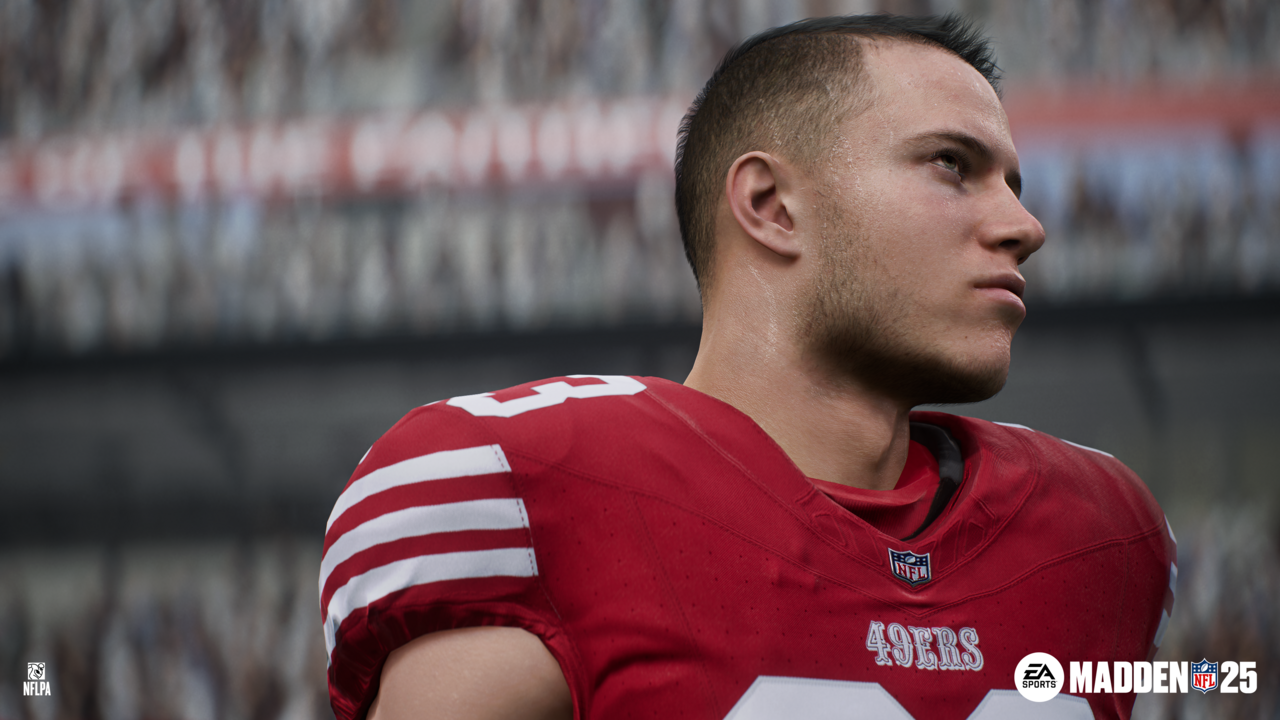
In this year’s new Draft presentation, Commissioner Goodell comes on stage and introduces each of the first 10 picks before shaking hands with the selected players and pausing for a photo op, while the rest of the first round is shown on stage too, and later picks are seen celebrating from home. All of this sounds just like real life, but when you watch it happen in the game, it’s off, in an uncanny valley, “Did aliens make this?” kind of way. The stage looks drab and empty, the applause from the audience doesn’t come close to the raucous energy of the real Draft, and though I can see why voice acting is probably a bad idea, its absence sticks out. It lacks a commentary team breaking down each player’s college tape, discussing why they were picked when they were rather than sooner or later, and breaking down how the player may fit on their new pro team.
Even if we pretend Madden’s Draft presentation closely captures the real-life atmosphere, sometimes the information you’ll see is faulty. After a pick, you’ll see a grade for your draft pick, but too many times I just saw an “A.” I did a draft where I controlled all 32 teams, and everyone in the first round got an A for a grade–that is until one player finally got a B-. After this point, every draft pick’s information actually said this previous player’s name and measurables instead of their own. It was as though the grade finally changing somehow broke the entire system. Others online have shown examples of a player’s profile picture not matching the person on stage, like a drafted black wideout standing on stage looking like a white offensive lineman.
The changes to the Draft feel superficial, as though EA wants credit for having created a “new Draft presentation” without going far enough to make an interesting Draft presentation. You can’t just check a box and say it’s done. Too often, Madden’s off-field attractions express this trait.
That’s a clear issue in another would-be-great new feature. Madden 25 offers multiple commentary teams for the first time in the series, with the legacy group of Brandon Gaudin and Charles Davis being joined by two other teams that sound fun on paper: Mike Tirico and Greg Olsen, as well as Kate Scott and Brock Huard. Having a variety of voices calling games is a wonderful idea, but the two new teams fall shy of convincing. The worst offender is Mike Tirico. I don’t know how, but this game has turned one of the best play-by-play guys working today into a robotic facsimile.
It’s hard to call games when the game isn’t really happening in front of you. I’m sympathetic to that truth, but if you’re going to have someone of his caliber in the game, he needs to sound at least close to how entertaining he is in reality. Here, Madden can offer only a funhouse mirror of our world. The same is true for Kate Scott, and I think in both examples, it’s partly a case of the team not having enough material to use yet. Gaudin and Davis have cataloged audio for years, and they record new material each year. But I also don’t recall the inaugural year of that legacy team being as shallow in their football commentary as these new teams are.
The problem is twofold: There’s both stilted delivery and too little material for the commentators to offer any analysis with depth or range. All four of the new voices come off as novices. Even when they attempt to go below the surface and offer meaningful breakdowns with their surely impressive real-life football IQs, they fumble it due to Madden’s legacy issue of failing to capture a moment’s significance or contradicting itself. Kate Scott closed out my first Super Bowl appearance with the situational awareness of someone texting and driving, offering long stretches of nothingness as the final minutes of the nation’s marquee championship game ticked away.
None of the six commentators are immune to saying the wrong thing, like when Greg Olsen–regarded as today’s very best color commentator–noted in the fourth quarter of a game how a quarterback was off to a bad first half. Whether you find such gaffes funny or frustrating, they surely aren’t rarities; they’re too common and go back years in Madden.
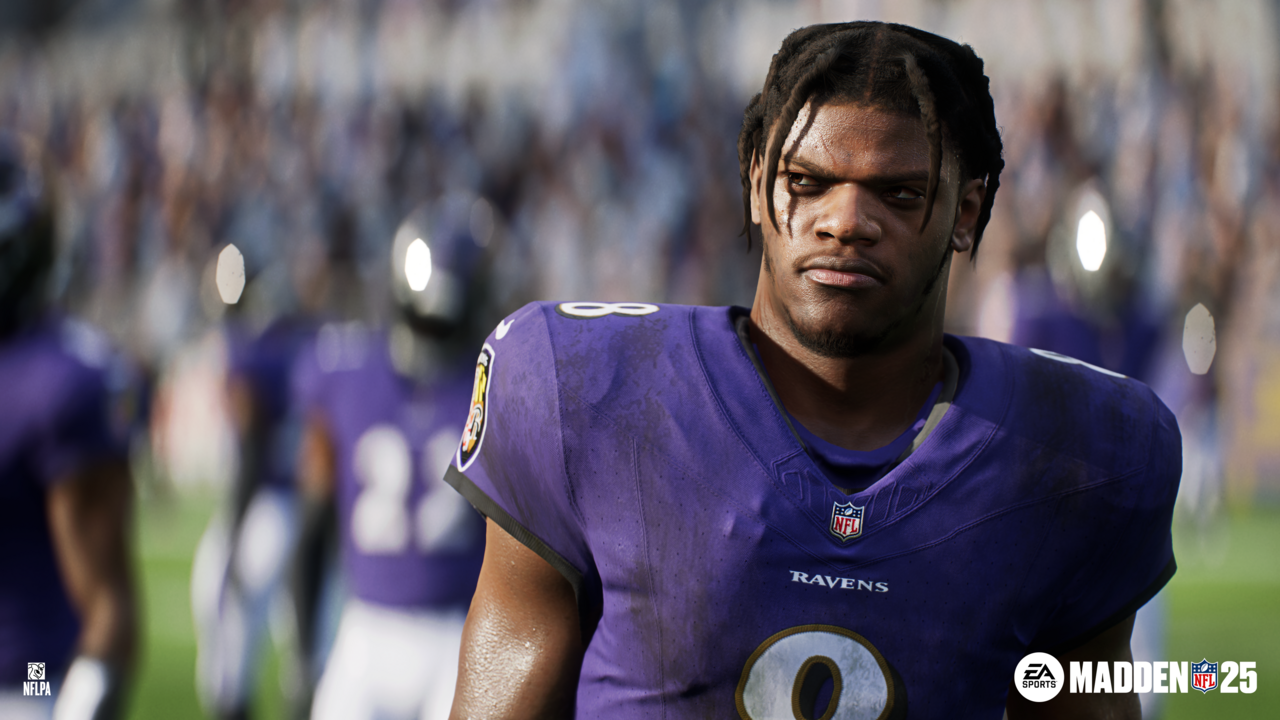
On the bright side, the Team Builder web tools first introduced in College Football 25 are now in Madden for the first time ever, letting players create custom team logos, jerseys, and stadiums with a level of detail that no Madden player has ever seen. This is a fun tool with lots of depth, but the best feature is how you can elect to never use it directly and still benefit from the many options in the game’s download center.
Bonafide artists can make elaborate, aesthetically cool jerseys and logos, and all you have to do is find one you like in the simple-to-use creation suite. After years of the same tired team logos and USFL-tier uniforms, the Madden team has wisely handed off the art supplies to its community, where they have already found better results.
It’s almost mysterious to me how I’m moved to invest hundreds of hours into this series every year despite it reliably offering the same problems–even if the specifics change, the philosophy remains. Off the field, Madden 25 is mostly checking boxes, and it stings to see my favorite sport not receive a video game companion similar in its grandeur. But the on-field gameplay is paramount and, here, very strong. I don’t lose sight of that. This makes Madden 25 enjoyable despite its plethora of locker-room issues. I’ve played over 30 hours of Madden 25 so far, and I will play hundreds more before next August, at which point I will get the newest Madden and undoubtedly do it all over again. In the end, maybe that’s the real Madden Curse.
